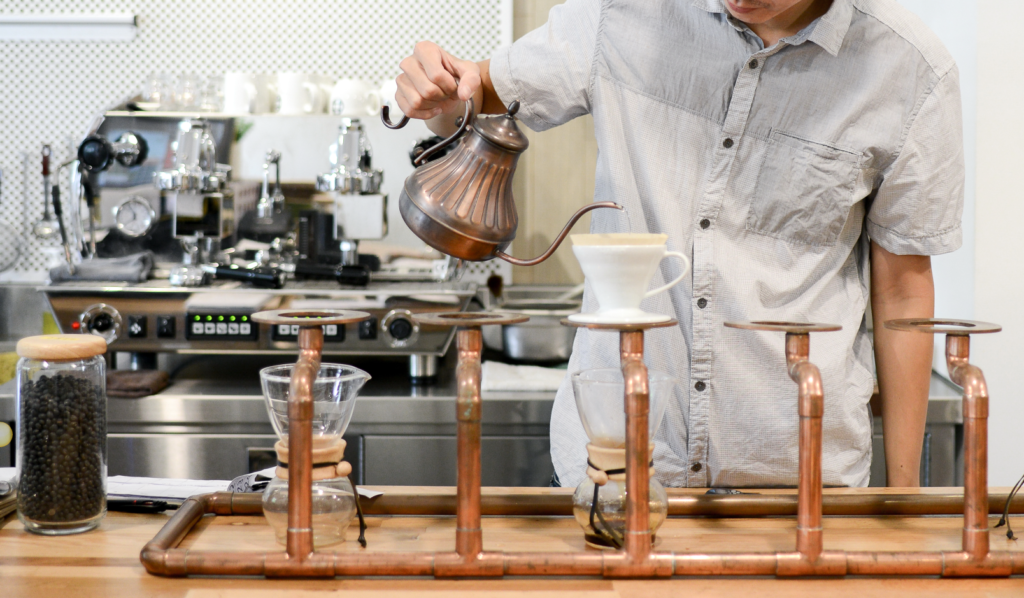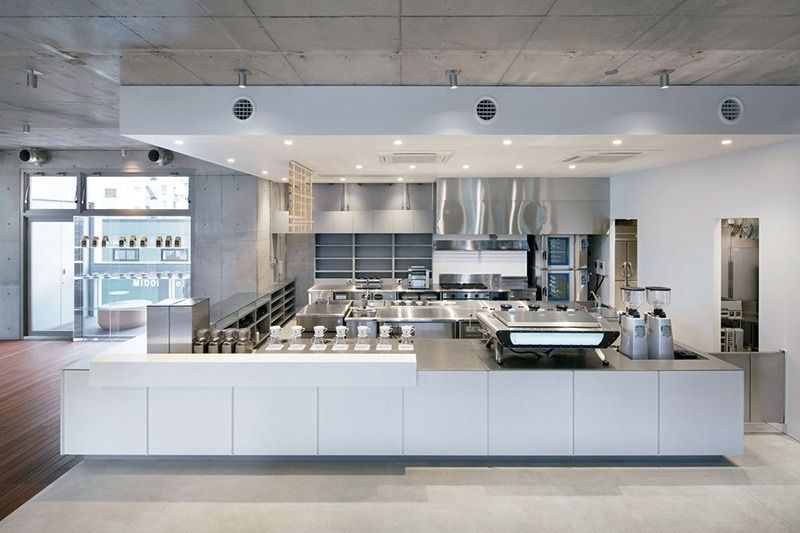[bar design] what is a good dining space? Starting from understanding experience design
Professional coffee knowledge exchange more coffee bean information please follow the coffee workshop (Wechat official account cafe_style)
At the beginning of the article, let's quote Wikipedia's explanation of experience design in order to have a preliminary understanding of nouns. "Experience Design (XD)" is a set of solutions that focus on user experience and culture in the fields of design products, processes, services, activities, full-channel marketing and environmental design. As a new discipline, experiential design integrates majors from many other disciplines, including brand strategy, brand positioning, interior design, cognitive psychology, product design, interactive design, service design, information technology and design thinking. In business, experience design is used to create moments, through the interaction between people, people and brands, the mastery of contact points, and then create ideas, emotions and memories. Commercial experience design is also known as consumer experience design.
Then, based on experiential design, I will explore the basic concepts needed to open a restaurant and start a business.
The complete experience of a good cup of coffee
Recall the experience of your favorite coffee shop and imagine drinking your favorite coffee, which may initially be introduced by a friend or recommended by a blogger, sitting in the coffee shop facing a large well-lit floor-to-ceiling window. the air emits the aroma of grinding beans, listening to music and drinking coffee. It is also possible that you are sitting in front of the bar and the boss occasionally asks kindly and tells vivid coffee stories. There are many collections of bosses traveling to different places in the store. Similar experiences always impress us and often come back to visit us. Very often, this is the key to the success of a business entity.

Three levels from product to experience: product, skill and cultural value
To explore the reasons carefully, in addition to the coffee itself, there are many services and cultures that support each other. To put it simply, an experience like this actually consists of three levels. At the bottom is the product that we are familiar with in the past, that is, how much this cup of coffee costs and whether it tastes good or not. Most traditional stores can stay in the camp long enough because the product itself is very good or unique; the second level is the skill and innovation developed in the process of pursuing customer satisfaction, and humanized service must be taken into account at the same time. Finally, after the natural accumulation of time, the corresponding and seemingly elusive cultural value, such as story and brand value, is the third level. Therefore, the complete consumer experience includes the integration of products, skills and cultural aspects.
Understand experience design from customer journey architecture
In my observation, some coffee shopkeepers are often very persistent in producing a special cup of coffee, but do not care about the process of customers' consumption at all. this is reflected in opening a shop, often because the shopkeeper has good business ideas. but only focus on the moment of opening a restaurant, or only focus on the meal itself, and lack of understanding of the interaction between the customer and the consumption process.
Through rational analysis and research, we understand that a good consumer experience process is a process from consciousness, consideration, purchase and experience to continuous buyback. A long-term business or brand must strive to achieve a positive cycle, so successful restaurant service must continue to push customers to the next stage at each stage. At first, it may be good marketing or word-of-mouth, then it may be better products, and the next stage is good service, extending to the surrounding goods, and then to the communication channel, even for customers who leave, we should also strive to bring customers back to the stage of consciousness and become consumers of this cycle.

The benefits of experience design are not only reflected in the sales results and brand value, but also need to stand the test of time for successful brands. One of the most familiar examples is Starbucks. Starbucks, founded in 1971, has been creating brand value and culture in the cycle of consumer experience for decades. Following the opening of Starbucks Reserve Roastery & Tasting Room in downtown Seattle in 2014, the newly opened Starbucks boutique bakery in Shanghai was described as a "coffee park with full sensory experience" at the end of 2017. The flagship store, which now covers the largest area, has not only built the longest coffee bar in Starbucks history, allowing consumers to take the time to stop and stay and enjoy the journey from raw beans to roasting, grinding and brewing coffee. It also uses the latest technology, including AR and a more convenient payment process, to take services to a new level and turn a new page for all-round experience design. Although it doesn't pay attention to the style and uniqueness of craftsmen, Starbucks still uses automated equipment and innovative ideas to experience the exquisite and diverse Starbucks model, presenting products, services and culture completely in front of consumers.

With this concept, in the next chapter, we will discuss in more depth the specific methods of experience design in the dining space.
.
Important Notice :
前街咖啡 FrontStreet Coffee has moved to new addredd:
FrontStreet Coffee Address: 315,Donghua East Road,GuangZhou
Tel:020 38364473
- Prev

"Dream Cafe Entrepreneurship Tips" the store planning and decoration of the secret of building an online celebrity cafe
Professional coffee knowledge exchange more coffee bean information please follow the coffee workshop (Wechat official account cafe_style) do you know which type of business circle should be opened in which coffee shop is the most profitable? Which business model is most suitable for you, such as professional type, compound type, different industry combination and so on? What directions should the store planning and decoration focus on first? Why is the bar the soul of a cafe? Meaning
- Next

Bar Design and equipment Cafe Bar Design must be seen
Professional coffee knowledge exchange more coffee bean information please follow the coffee workshop (Wechat official account cafe_style) "Dream Cafe Entrepreneurship Tips" shop planning and decoration article: Zheng Jiahao, Wang Shiyu "Design Cafe opening Learning" bar is the core of the coffee shop, the type usually changes with the different positioning of the coffee shop, the details can be understood.
Related
- What documents do you need to go through to open a coffee shop? coffee shop coffee shop certificate processing process
- How to purchase Coffee beans in small Cafe how to choose a suitable supplier for domestic Coffee supply Company
- How to drink Starbucks Fragrance White Coffee? how to make Australian White Coffee? what Italian coffee beans are recommended?
- The Story of Flora Coffee: the name of Flora Coffee Bean and the implication of the Flowers on Florna Coffee
- How much does a cup of coffee cost? How much is the profit of a cup of coffee? What is the profit of the coffee shop in a year?
- Yunnan small Coffee, known as "fragrant Coffee", introduces the characteristics of Alpine Arabica Coffee producing areas in Yunnan, China
- 2023 latest Starbucks full menu price list how much is a cup of Starbucks coffee what is better to drink the most popular hot and cold drinks recommended
- Starbucks different kinds of Coffee Price list Starbucks menu 2023 Top Ten Best drinks in Starbucks
- Starbucks Spring praise Comprehensive matching Coffee Bean theme Story Packaging implication and taste description
- The cost of a cup of coffee latte American coffee cost price and selling price

